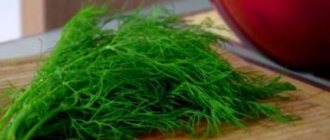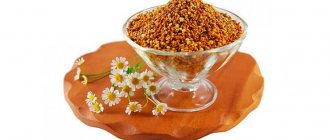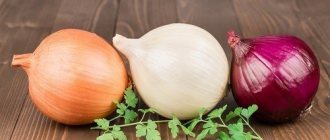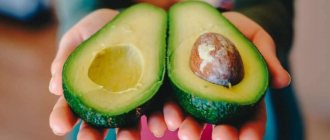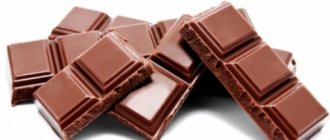Broccoli is an incredibly nutritious vegetable, rich in vitamin C and other beneficial nutrients. 100 grams of broccoli provides you with about 150% of the recommended daily intake of vitamin C. 100 grams of broccoli contains 34 calories.
Broccoli contains about 4.5 grams of carbohydrates per 100 grams, which means that broccoli is relatively safe for low-carb and keto-friendly diets.
Broccoli has fairly large heads that you probably won't use all of. Or even when you've cooked everything, there are leftovers. This inevitably begs the question: does broccoli go bad?
Of course, since broccoli is a plant product, we all know that it spoils. But there are many questions about broccoli. People are unsure whether it needs to be refrigerated, how to store it after cooking, and whether soft or yellow broccoli is ok to eat.
We'll tell you all about it. Let's look at the shelf life, shelf life and signs of spoilage of broccoli. If this is what you're looking for, read on.
Features of storing broccoli
To preserve cabbage for a long period of time, it is important to follow certain recommendations. First of all, you should choose vegetables that can survive long-term storage. Compliance with harvesting rules is of no small importance.
Cabbage should not be overripe. Such a vegetable cannot be preserved. In addition, broccoli becomes bitter and tough when blooming. It loses the bulk of useful elements. To prevent the cabbage from becoming overripe, it should be checked a little earlier than expected. The ripening period varies depending on the conditions. The ripeness of broccoli can be determined by the following signs:
- a quality product has a dark green tint;
- the diameter of the head reaches 10-12 centimeters;
- inflorescences do not have yellow spots;
- the heads have a dense and strong consistency;
- the central inflorescences have larger inflorescences compared to the outer ones.
How long does broccoli last?
To make sure your broccoli lasts the longest, you should start by choosing the best one at the grocery store. Choose broccoli with firm, fresh stems and dark green heads.
It's difficult to say how long raw broccoli will last. There are many factors that go into this, such as how and how long it was stored before you bought it.
If you choose a decent looking head of broccoli, it will keep in the refrigerator for at least 4-7 days, possibly longer. Of course, after a week it most likely will not go bad, but its quality will begin to decline quite quickly.
In other words, if you store raw broccoli in the refrigerator, you'll probably have to discard it for quality reasons. And not because it has gone bad. If you plan to store fresh broccoli for longer than a week, consider freezing it.
Previously cooked broccoli can be stored in the refrigerator for 3 to 5 days. If you want to keep it for a longer period, it is best to freeze it. Especially since it takes very little time to freeze broccoli.
As for the shelf life of frozen broccoli, it is practically unlimited. When it's in the freezer, its quality degrades very slowly, so the sooner you use it, the better quality you'll get. For best results, use frozen broccoli within six months.
Please note that the dates shown above are approximate.
Do not wash the head of cabbage before storing. The extra moisture will encourage mold growth, and you don't want that. Wash only when ready to use.
Optimal storage conditions
Broccoli should not be kept warm for long. At the same time, cabbage needs high humidity. The only optimal place for storage is the refrigerator. The plant can also be frozen. The optimal temperature should be 0…+10 degrees.
Humidity parameters should be 90-95%. This is why broccoli is not stored indoors.
Even if all recommendations are strictly followed, the vegetable can last in the refrigerator for a maximum of 2 weeks. However, most often the shelf life does not exceed 1 week. If there is a need to preserve the crop for 6-12 months, it should be frozen.
See also
How to properly and for how long you can store dried cherries at home
Selection rules
To prevent broccoli from spoiling for as long as possible, you need to carefully consider its choice and take into account several recommendations:
- the size of the heads should not exceed 15 - 20 cm;
- inflorescences are closed, tightly pressed to each other;
- Smaller buds are located along the edges, closer to the center their size increases;
- the color of the fork is rich and uniform, there should be no yellow or whitish spots;
- inflorescences without dents, mechanical damage, or signs of rotting.
Storage methods at home
To preserve broccoli for the winter, you need to choose the right method and strictly follow all the advice of experts.
In a refrigerator
To implement this method, it is worth preparing a small container. Its diameter should be slightly larger than the head. Pour 1.5-2 centimeters of water into the container. The prepared head should be lowered with the stem down into the bowl and covered with a plastic bag in which small holes should be made. Place the container in the refrigerator. Changing the water daily will keep the product fresh for several days.
Paper towel
The prepared head can be loosely wrapped in a slightly damp paper towel and placed in the refrigerator. Broccoli can be stored in this form for 3-4 days.
Foil
In this case, it is recommended to wrap each head in foil and place it in the refrigerator in the vegetable compartment. Cabbage prepared in this way can be stored for 1-1.5 months. In this case, the condition of the broccoli should be periodically assessed. If yellow spots appear on the surface, you should use the cabbage immediately.
In the freezer
If you have a large harvest of broccoli, you can use the freezer. This method allows you to preserve the product until winter or until the next harvest. Before freezing, broccoli should be washed and separated into florets. To get rid of insects, you need to make a saline solution and lower the head into it. Then it is recommended to rinse it thoroughly.
Boil water in a large saucepan and immerse the inflorescences in it. Boil for 2-3 minutes. Then quickly transfer the cabbage into ice water and cool. Place the product on a clean towel and dry. Place the inflorescences in bags and put them in the freezer. You can also use airtight containers. Broccoli can be frozen without blanching. In this case, it should be disassembled into inflorescences, washed and dried. Pack into plastic containers or bags and freeze.
See also
How long and at what temperature can meat be stored in the freezer, expiration dates
In the basement or cellar
In order to store a product in the basement for the winter, it should be provided with suitable conditions:
- the temperature should be 0…+6 degrees;
- air humidity must be maintained at 90-95%;
- the room must be ventilated.
Each head should be wrapped in newspaper and placed in the basement. Cabbage can be stored in this form for 2 months. If the paper gets wet, it needs to be replaced. If the outer leaves are damaged, they are removed and the petiole is slightly shortened.
Dried
First, broccoli should be placed in a saline solution to clean it of contaminants. Then blanch in boiling water for 2 minutes. Divide the heads into florets and cut into 2 parts. Dry in an oven or special machine.
The readiness of the vegetable should be assessed by appearance. If the heads remain firm when pressed but do not release juice, they can be placed in a clean jar and stored. It is permissible to eat dried cabbage throughout the year.
Pickling
For this recipe you will need 1 head of cabbage, bay leaf, chili, carrots, onions, garlic, beets. For the marinade, you should take 1 liter of water, 150 grams of vinegar and the same amount of sugar, 40 grams of salt. The cabbage should be disassembled into inflorescences and the vegetables should be cut. Place broccoli, vegetables and spices in jars. Separately make the marinade and boil it. Pour over the cabbage and close the jars. When they have cooled, take them to a dark place.
Can you freeze broccoli?
Have you ever bought frozen broccoli florets? Even if not, you've probably seen them at your local grocery store. So, you already know that you can freeze broccoli and it will freeze well. Now that you have too much broccoli on hand, you're looking for ways to store it.
Freezing is the first thing that comes to mind because it is an easy solution. The vegetables won't spoil, and you don't have to decide how or where to use them. Just freeze your vegetables and you'll forget about them until you need them. So, if you've decided to freeze your broccoli, let's dive into the details.
There are at least a few ways to freeze broccoli (as well as cauliflower). Let's look at the most popular of them. Each has its own benefits, and it's up to you to decide which one is best for your needs.
How to defrost correctly
There is no need to defrost cabbage before cooking. This procedure will cause the vegetable to lose its shape. After heat treatment it will look like an ugly mush. To avoid this, remove the cabbage from the freezer, separate it with a knife and start cooking.
If you still need to defrost the cabbage, you should take it out of the freezer and put it in the refrigerator. This will help achieve gradual defrosting and preserve maximum nutrients.
See also
How much and how to properly store crayfish at home
Harvest
How to remove broccoli for storage? Proper harvesting of broccoli is the key to successful storage. The shelf life depends little on what kind of refrigerator you have and how the cabbage is stored there.
It depends much more on what happened to the cabbage before storage in the refrigerator. If harvested incorrectly, cabbage quickly withers, turns yellow and subsequently spoils .
Such cabbage is no longer worth eating, since its culinary value is reduced to a minimum. You can avoid this by following important rules when cleaning:
- Harvest broccoli during the coolest hours of the day to keep it warm. Cabbage is very sensitive to it and immediately begins to wither.
- Cut the broccoli not exactly under the head, but 10-12 cm lower .
- Do not tear off the head, but carefully cut it so as not to damage the stem , which will remain on the garden bed! It will still be needed.
- Broccoli is resistant to low temperatures, but not lower than -2 °C . Otherwise the cabbage will simply freeze.
After harvesting, the harvest should be stored in the refrigerator as quickly as possible to minimize exposure to heat . It is recommended to do this within 30 minutes maximum. Therefore, it is advisable to choose a storage method in advance and, if possible, prepare everything you need to remove the cabbage right away.
It was mentioned above that cut stems in the garden will come in handy later. The fact is that they can produce young side shoots with small inflorescence heads up to 6 times, which will provide an additional harvest . Young heads are ideal for storing in the refrigerator and freezer. It would be a sin not to take advantage of this.
You can find out how to properly and at what time to harvest white cabbage, cauliflower, as well as kohlrabi and Brussels sprouts on our website.
In the basement
To store broccoli in the basement, it must meet certain requirements:
- the air temperature should not fall below 0°C and rise above +5°C;
- relative air humidity should be at 80-90%;
- the basement must have good ventilation.
Store luche cabbage in well-ventilated boxes. Cover the bottom of the box with a damp cloth and lay the cabbage legs on the cloth. You can build cardboard spacers between the heads so that the cabbage touches each other as little as possible. Periodically check the moisture content of the fabric and spray it with a spray bottle.
Note! Water should not get on the cabbage heads!
In the basement, broccoli will remain fresh for 2-3 months.
Do you need to wash cabbage?
Housewives often ask: do they need to wash cabbage? Definitely yes. But not after harvesting the garden or shopping at the store, but before preparing dishes.
- Prepare a large bowl, fill with water, add 3-4 tsp. vinegar.
- Dip the inflorescences into the solution for 12-15 minutes to remove debris and insects.
- Remove the vegetables, rinse, and blot to remove moisture.
- Use immediately for cooking.
Do you know that…
Broccoli heads should go into the refrigerator half an hour after they were brought from the store or picked from the garden. Do not waste time, otherwise the vegetables will lose their nutritional value and freshness.
How long does cut cabbage last?
Heads of cabbage are stored in the basement, refrigerator or on the balcony. But besides this, you can store cut but unused vegetables in the refrigerator for up to a month. Part (for example, half) of a chopped head of cabbage should be wrapped in cling film and placed in the refrigerator.
Interesting materials:
How to make a print screen on a computer keyboard shortcut? How to make a print screen on an Asus laptop? How to make a print screen on a Lenovo laptop? How to make a print screen on a Samsung laptop? How to make a greeting on Windows 10? How to continue a table on another sheet in Word? How to scroll on a laptop? How to register a foreign citizen? How to get a pass for a CIS citizen? How to flash firmware for Samsung phone?
Harvesting and preparation for storage
Broccoli should be collected for storage and consumption during the period of technical maturity, when its inflorescences are still green. Typically at this time the head has a diameter of 10–17 cm and a weight of 250–300 g. The exact timing of harvest will depend on the variety being grown and the climate.
The harvest is harvested by cutting the central stem, leaving 10–12 cm from the head. If a repeat crop grows, then the flower stalks from the side shoots are cut off.
Important! Cabbage that is harvested on a cloudy day can be stored for a long period, at the right time, by cutting and not picking. Improperly harvested heads quickly wither and turn yellow.
To keep broccoli as long as possible in the cold, you need to prepare it properly.
Preparation consists of the following steps:
- head washing;
- placing them in a saline solution for half an hour (4 tablespoons per 4 liters of water);
- complete drying.
Soaking is necessary in order to remove insects from the inflorescences. Heads cannot be stored in a damp state - this risks the development of mold and rot.
Conclusion
Freezing broccoli is a simple process that requires following some basic rules. The main task of the housewife is to choose a high-quality product that is fresh and contains a maximum of useful substances. You should not freeze the vegetable fresh, without preliminary heat treatment, because it will lose its structure and will not be able to decorate the dish. Broccoli, like other vegetables, should not be re-frozen; after thawing, it must be consumed in full. Also, do not forget about the shelf life of the product; it is recommended to keep it in the freezer for no more than 6 months. It is during this period that the concentration of nutrients remains maximum and then gradually decreases.
Video: The healthiest cabbage is Broccoli. We freeze it and retain its beneficial properties.
The healthiest cabbage is Broccoli. We freeze it and retain its beneficial properties.
Watch this video on YouTube
Video: FRANCE. HOW TO FREEZE BROCCOLI.
FRANCE. HOW TO FREEZE BROCCOLI.
Watch this video on YouTube
Do you want to understand better than others?
- How to properly freeze beets for the winter in the freezer: popular freezing recipes - When frozen, beets retain a maximum of active nutrients and vitamins, which are subsequently well absorbed by the human body. Storing fresh vegetables in…
- How to properly freeze fresh cherries for the winter - Cherries are rarely frozen; most likely, many housewives simply do not know that this berry best retains its beneficial properties in the freezer. This is the optimal…
- The most popular ways to freeze chanterelles for the winter - Chanterelles have more pronounced taste characteristics when compared with champignons and oyster mushrooms. However, their significant drawback is the limited period...
- How to freeze peaches for the winter: 8 best ways - Freezing will help you preserve a delicious piece of summer. Find out how to choose the right fruits for vitamin preparations, whether they can be stored in the refrigerator, what ways there are to...
- How to freeze and store cilantro in the refrigerator for the winter - Storing cilantro as a preparation for the winter is a good alternative to consuming this spice fresh. Even when cilantro is in the freezer or canned, it actually...
Useful tips
If you want to serve broccoli dishes all year round, it's easy to do:
- Plant several varieties with different ripening periods. Then already in the middle of summer it will be possible to cut the first harvest. Late broccoli will keep well if you follow our tips.
- When you harvest your last harvest, divide it into three parts. Put the first, small one in the refrigerator and eat it first. Place the second part in the cellar. And when you use it up, it will be the turn of frozen broccoli, which will not lose its quality until late spring.
If you are already an experienced gardener, then I would like to hear how you store broccoli. Do you have any proven methods you could share?
Did the article help you?
When is broccoli harvested?
The main rule that gardeners follow when determining the harvest date is that the heads are cut off as late as possible, but they should not bloom. Overripe broccoli loses most of its nutrients and flavor.
Cabbage is harvested until frost, when the size of the inflorescences exceeds 10 cm in diameter. At the same time, bright green buds should be dense and elastic. Broccoli is harvested early in the morning in dry weather. The heads are carefully cut off with a sharp knife, cutting them off along with a fragment of shoots up to 12 cm long.
Attention! Immediately after harvesting the cabbage inflorescences, the broccoli is transferred to a cool place.
Not all heads can be sent for storage. Having collected the inflorescences, they are inspected and sorted. The forks with open buds are put aside and these are eaten in the near future. Dense, elastic heads with a uniform green color, 12–15 cm in diameter, are the best specimens; these are the ones you will work with.
Broccoli harvest





